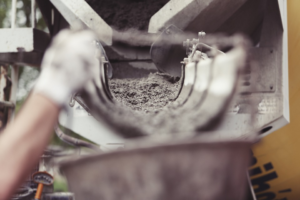How to Use Ground Glass in Concrete

If you’re interested in making concrete that’s better for the environment and stronger, using ground glass can be a great choice. Here’s a simple step-by-step guide on how to use ground glass as a replacement for part of the Portland cement in your concrete mix.
What You’ll Need:
Ground glass pozzolan, Portland cement, Water, Sand, Gravel or crushed stone
Mixing tools (like a wheelbarrow, shovel, or concrete mixer), Measuring tools (like a scale or measuring cups)

Step 1. Gather Your Materials
First, make sure you have all the materials you need. You’ll need ground glass pozzolan, Portland cement, sand, gravel (or crushed stone), and water. You can usually find ground glass pozzolan from companies that specialize in recycled materials. Research indicates that ground glass enhances concrete strength and durability, making it a sustainable choice.
Step 2. Check the Amount of Ground Glass to Use
Ground glass can replace up to 40% of the Portland cement in your concrete mix. The exact amount you use will depend on your project, but a common mix might be:
- 60% Portland cement
- 40% ground glass pozzolan
For example, if you’re making 100 pounds of concrete, you would use 60 pounds of Portland cement and 40 pounds of ground glass pozzolan.
Note: The optimal replacement level can vary based on specific project requirements and desired concrete properties. Check out this article to learn more.
Step 3. Mix the Dry Ingredients
Start by mixing the dry ingredients together. In a wheelbarrow, large bucket, or concrete mixer, combine the Portland cement, ground glass pozzolan, sand, and gravel (or crushed stone). Stir everything together until the mixture is uniform. Proper dry mixing ensures even dispersion of ground glass, which is critical for achieving strength improvements.
Step 3. Mix the Dry Ingredients
Start by mixing the dry ingredients together. In a wheelbarrow, large bucket, or concrete mixer, combine the Portland cement, ground glass pozzolan, sand, and gravel (or crushed stone). Stir everything together until the mixture is uniform. Proper dry mixing ensures even dispersion of ground glass, which is critical for achieving strength improvements.

Step 4. Add Water
Slowly add water to the dry mix. The amount of water you add depends on how wet you want the concrete. Typically, you’ll need about 0.4 to 0.6 times the weight of the dry ingredients in water (for example, if you have 100 pounds of dry mix, you would need about 40 to 60 pounds of water). Stir the mixture until it’s the consistency of thick batter, and make sure there are no dry spots.
Step 5. Mix Until Smooth
Keep stirring the concrete until the mix is smooth and all the ingredients are well combined. The concrete should be easy to spread and mold but not too runny. If the mixture feels too dry, add a little more water; if it’s too wet, add more dry ingredients.
Step 6. Pour the Concrete
Once your concrete is ready, you can pour it into molds, form it into blocks, or use it for whatever project you’re working on. Ground glass makes the concrete stronger and more durable, so it should work well for sidewalks, driveways, walls, or other concrete structures.
Note: Ground glass pozzolan can produce a lighter-colored concrete, which may reduce the “heat island” effect in urban areas. Click here to learn more.
Step 7. Cure the Concrete
After pouring, let the concrete cure. Keep it moist for at least 7 days (or longer if the project is large) to ensure the concrete hardens properly. You can do this by spraying it with water or covering it with wet towels. Curing plays a critical role in optimizing the pozzolanic reaction of the ground glass.
Step 8. Finishing Touches
After curing, your concrete will be stronger, more durable, and have a smaller environmental impact than traditional concrete. You can now use it for your building project!
Why Is This Better for the Environment?
By replacing up to 40% of the Portland cement with ground glass, you’re helping to:
Reduce CO2 emissions, since making cement is responsible for a large portion of global carbon emissions.
Reuse waste material, instead of sending it to landfills. Glass recycling provides a second life for non-biodegradable materials.
Create safer concrete, by avoiding harmful byproducts like fly ash, which can contain heavy metals.
Conclusion
Using ground glass in concrete is an eco-friendly and effective way to make stronger, more durable concrete. By following these simple steps, you can help reduce pollution while still getting the high-quality concrete you need for your project. Whether you’re building a sidewalk, a wall, or a decorative piece, using ground glass in your concrete mix is a great way to make a positive impact on the environment! Research consistently highlights the proven benefits of ground glass in modern construction.

